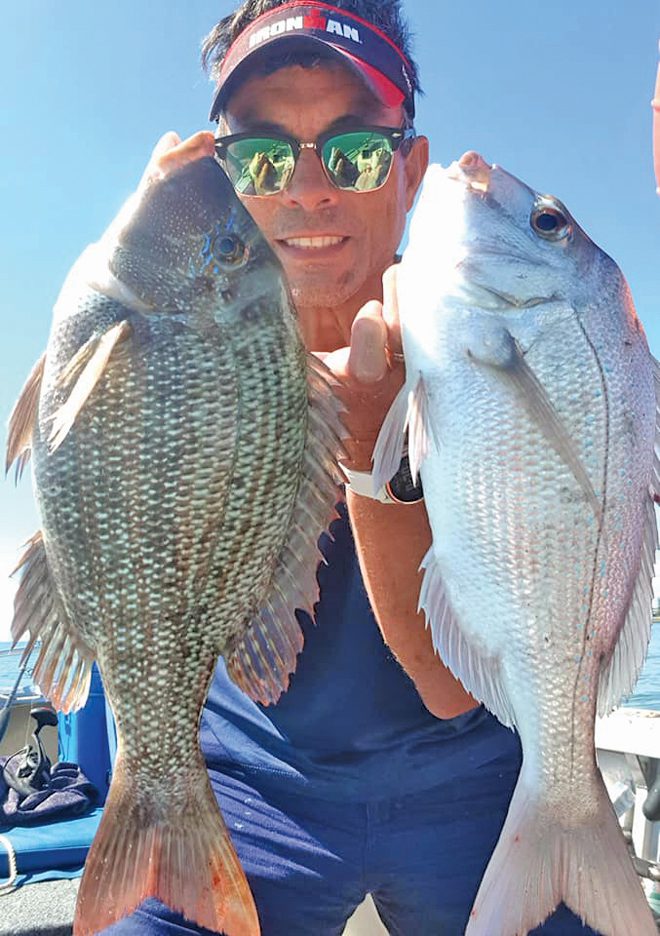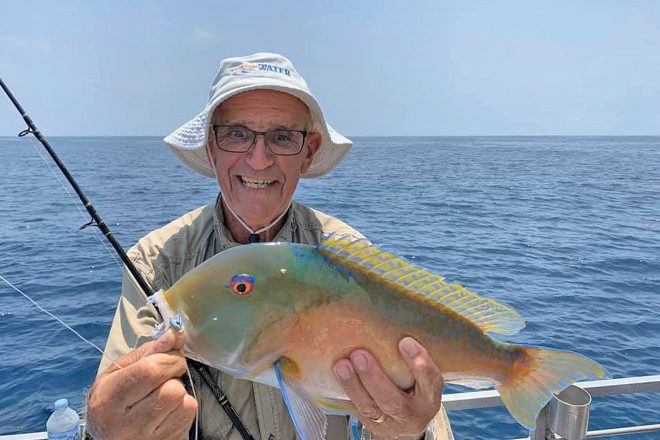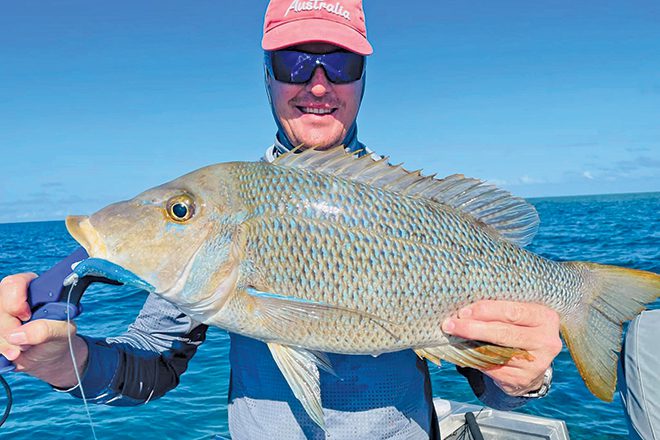Two of the best tasting fish you can catch in Moreton Bay are tuskfish and sweetlip. Three species of tuskies inhabit the bay – venus, purple and blackspot – and two species of sweetlip – grass and spangled. Moreton Bay tuskies
Grass sweetlip have a minimum of 30cm and possession of 10, spangled have a minimum of 45cm and possession of five, and tuskfish have a minimum of 30cm and possession of six. Spangled are the biggest in the sweetlip family and blackspot are the biggest in the tuskfish family. Moreton Bay tuskies

Grassies inhabit the shallow reefs, while spangled live on the drop-offs. Venus and purple tuskies like to feed on the coral grounds and drop-offs, while blackspot prefer the deeper drop-offs. No species of tuskfish can be caught at night – they cover themselves in a slime that helps them stick to overhangs or small caves during the night, which is the reason tuskfish are so slimy. Moreton Bay tuskies
I use a variety of bait for sweetlip, though small plastics work on catching both species too and small hard-bodies to some degree. But if bait is the choice and you’re fishing the shallows, berley will help to attract them. I usually fish the hour either side of a high in the shallows and as the tide retreats, start working the drop-offs.

Pound for pound, grassies are one of the best fighting fish you will come across, the same applies to tuskies. They inhabit areas such as the eastern side of Mud and Green islands, the Wellington Point drop-offs, East Coochie Artificial Reef, the southwest corner of Peel Island, the northern side from Lazeret Gutter down as far as the Rainbow Channel, and also the Scarborough reef system.
Some of the best spots to target sweetlip, especially grassies, are the coffee rod structures in the shipping channel from Curtin Artificial Reef past Bulwer and up towards the Caloundra bar – remember you’ll be in open water and to have the correct safety gear.
Spangled can be caught in the Rainbow Channel along the eastern drop-offs and along the shipping channel drop-offs. While fishing the southern bay islands, you’re also in with a chance of catching snapper and goldspotted cod.

Bait such as whole small squid, squid heads, fresh green prawns and strips of fresh mullet work well when fishing the shallows. I seldom use a sinker and will let the bait drift slowly down. When I move to the edge of the drop-off, I then use a small sinker and let the bait slowly drift down and retrieve back to the boat in a jerk-like manner.
When sweetlip take your bait, it’s a very subtle bite. Use a slow retrieve with bait and plastics. Plastics range from bait style to paddle tail designs in grey white or watermelon on 1/8oz jig heads, use the same plastics for spangles in 2-3” size.
Gear is usually a 7’ rod with a whippy tip, 10-12lb braid and 20lb leaders. I use the heavier leader when fishing the drop-off where you can easily get rubbed off. The water of Moreton Bay is mostly shallow and what we’re looking for are rubble grounds, bommies and good drop-offs.
 Bush 'n Beach Fishing Magazine Location reports & tips for fishing, boating, camping, kayaking, 4WDing in Queensland and Northern NSW
Bush 'n Beach Fishing Magazine Location reports & tips for fishing, boating, camping, kayaking, 4WDing in Queensland and Northern NSW








